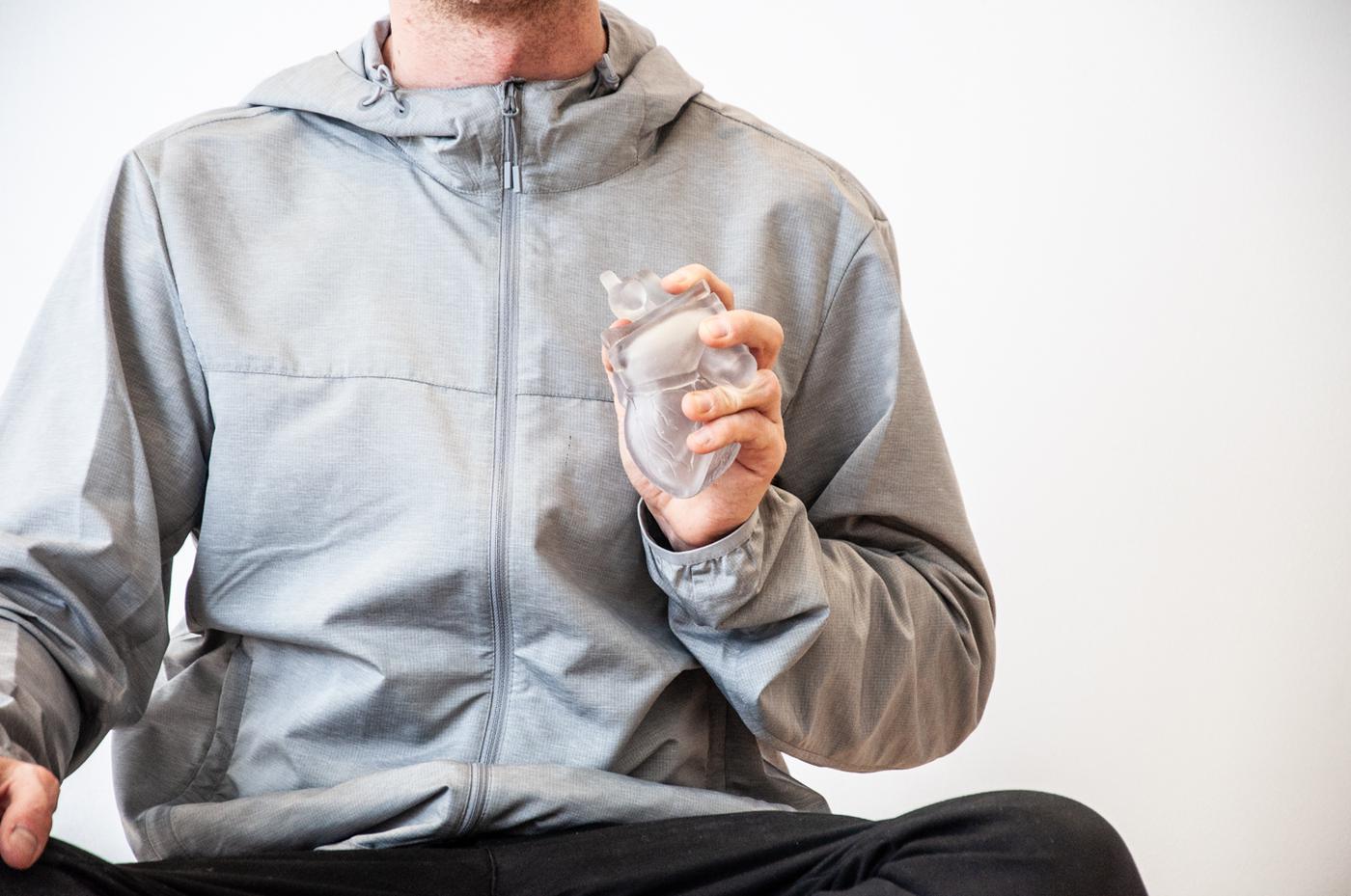Chris Lloyd
MAS.863/4.140/6.943
How To Make (almost) Anything
2019
HTMAA Final Project: Heartbeat Charlieplex
For this class, I was inspired by the concept of closed-loop wearables. Meaning, devices that non only monitor the user, but actually offer and intervention that improves the users productivity, health/wellbeing, etc.
What does it do?
The Heartbeat Charlieplex reflects your heartbeat by connecting a wearable device to a portable object with an LED light display. The device automatically finds and connects to a heart rate monitor when it is nearby. The beat increases speed as the user heart rate increases, showing the user their current cardiological state.
Who's done what beforehand?
I would say that his product is a very basic example of Heartbit, a project in the Fluid Interfaces group at the Medialab. HeartBit connected a heart rate sensor to 3D heart with haptic feedback, mirroring the individual’s heart. The purpose of the HeartBit is to help users self-regulate their heartbit to address stress, anxiety and strain on the body as well as develop general self-awareness.

credit: Oscar Rosello / Media Lab Fluid Interfaces Groupcour
What did you design?
Materials and Components
| Component/ Material | # | Source | Cost per unit | Total Cost |
| PCB Board | 2 | Fab Lab | $1.75 | $3.50 |
| ESP32-WROOM | 1 | Fab Lab | $3.40 | $3.40 |
| LED-Red | 12 | Fab Lab | $0.13 | $1.56 |
| 3D Printer Filament | ? | Fab Lab | ? | ? |
| Slide Switch | 1 | Fab Lab | $0.84 | $0.84 |
| Tactile Switch | 1 | Fab Lab | $0.74 | $0.74 |
| 3.3V Regulator | 1 | Fab Lab | $0.32 | $0.32 |
| Resistors | 5 | Fab Lab | $0.01 | $0.05 |
| Capacitor .1 uf | 1 | Fab Lab | $0.12 | $0.12 |
| Capacitor 1 uf | 1 | $0.07 | $0.07 | |
| Capacitor 10 uf | 1 | $0.18 | $0.18 | |
| Heartrate Sensor | 1 | I used my own sensor (WHOOP), but a sensor could be used with another bluetooth connection for about $10. | ||
Parts & Systems

Charlieplex - Parts List
Charlieplexing is a technique for driving a multiplexed display in which relatively few I/O pins on a microcontroller are used e.g. to drive an array of LEDs. The method uses the tri-state logic capabilities of microcontrollers in order to gain efficiency over traditional multiplexing. Though I used PCB for the charlieplex, ultimately I would like it be on copper foil so it can be placed on the heart itself.
Networking - Parts List
I needed a way to connect my Charlieplex to the heart rate monitor so I used an ESP32-WROOM, which has Bluetooth and WIFI connection capabilities. I needed a part that could be a BLE client to my heartrate monitor.
WHOOP - Or any other heart rate monitor with a BLE broadcast.
What processes were used?
- Project Management - Github
- Computer Aided Design - Rhinoceros
- Milling (Subtractive Fabrication) - Roland SRM-20
- 3D Printing (Additive Fabrication) - Object30
- Vinyl Cutter (Computer Aided Cutting) - Roland GX-24
- Electronics Design - Eagle
- Embedded Programming - Arduino
- Electronics Production - Solder & Tears
What questions were answered?
- First of all, I learned how difficult it is to make a product from end-to-end.
- Second, I learned that vinyl cutting copper foil is a very tricky process. I should have abandoned this earlier and gone with another process so I could have finished the housing for the product.
- Finally, I think the process of learning how to catch BLE data on a client opens up a lot of interesting ideas for new products. More and more products use BLE broadcast of some kind and I think there are interesting hacks that could be created that are useful to users, especially devices that are able to knit different broadcasts together in useful ways.
How was it evaluated?
- How well can it read the heart rate? Overall, this went very well. I was able to read the heart rate with minimal delay.
- How well can it display the heart rate? This went okay, I was able to get the display on the charlieplex, but still have issues displaying it properly.
- How well do components come together? Overall, I fell short here. I was depending on the vinyl cutter to cut copper foil to put my display on the heart and it just didn’t work. I sunk too much time into this process instead of finding an alternative.
What are the implications?
In the future, I seem the possibility that our homes and lives could include objects that reflect our physiological state, increasing self-awareness and supporting self-regulation of stress/ anxiety and promoting healthy habits. While I used a heart shape, I think there are more interesting inputs to experiment with such as galvanic skin response or heart rate variability that might reflect a broader sense of the individual’s wellbeing. There are also more interesting physical forms to experiment with in the future that might help someone build empathy for themselves, like a robotic plan that wilts or rises based on physiological state. Also, as more devices leverage BLE broadcasting technology, there may be other interesting signals to display to someone in their home or throughout the day.